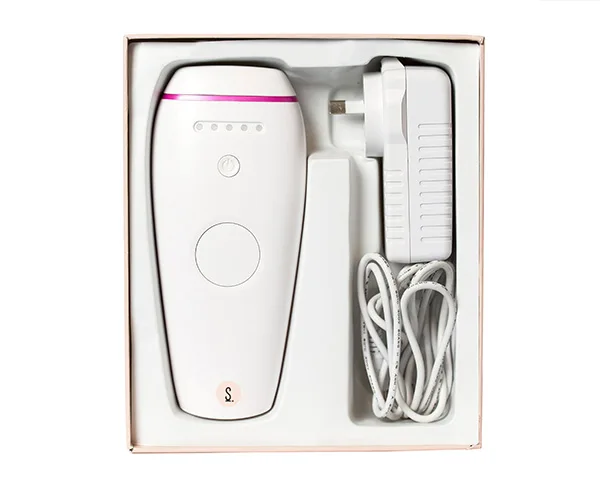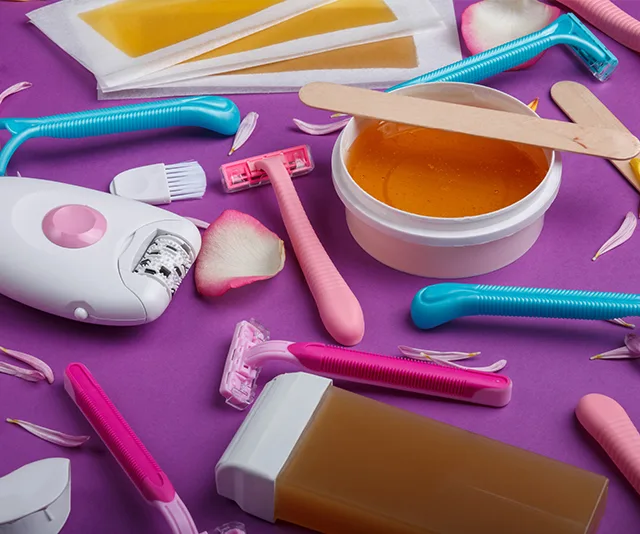When it comes to hair removal, there are so many methods to choose between whether you’re making sure your brows are ‘on fleek’ or need to make sure you have smooth legs for a special skirt.
There’s tweezing, epilating, waxing, laser, creams and of course good old fashioned shaving to choose from, but is there really a top choice?
At the end of the day, it’s up to you which hair removal method you choose and even if you want to remove your body hair at all. But for you curious folks out there, we’ve taken a look at the main six methods and analysed them in terms of price, effectiveness, their environmental impact and of course how much they hurt.
Tweezing
Pulling out individual hairs by the root with a pair of tweezers sounds straightforward but there can be complications.
This method is usually reserved for facial hair and is quick and relatively simple and it’s inexpensive too. A pair of tweezers will only set you back between five and 20 dollars.
However, tweezing requires that attention to detail as you don’t want a pair of mismatched brows so it’ll take a bit of time. Plus ripping out hair from the root hurts and as the hair grows back with the same texture within a week, it needs regular maintenance.

You’ve got to focus or could end up with very asymmetrical brows. (Image: Getty Images)
Waxing
Arguably the most painful, waxing requires you to apply warm wax to your skin and then remove hair from the root by ripping it off.
A packet of wax strips will only set you back about $10 from your local supermarket or pharmacy. And although the hair that grows back is softer because it grows back with a tapered end and works wonders on fine hair, there are a few negatives to consider.
Not only is there the pain, but there’s a higher risk of ingrown hairs after waxing plus it can make the skin irritated and sensitive.
It’s also environmentally-unfriendly too- Perth beauty experts Riz and Sandrine Syed say their salons alone could produce around 7.4 tonnes of landfill waste each year.
WATCH: Can men handle waxing? Post continues…
On top of that, for waxing to be effective, the hair has to have had substantial regrowth so you can’t be hair-free for a lot of the time. It can also often stimulate thicker hair growth and in some circumstances, lead to infections and even STI’s when it comes to bikini waxes.
“Pulling the hairs out of those areas increases the risk that tiny skin tears will get bacteria in them that was never meant to be inside the skin,” dermatologist Sandra Johnson told the Huffington Post.
“It can cause surface infections and even deeper cellulitis in some cases.”
“The skin infection impetigo is a common issue, too.. I have also seen ringworm worsened with waxing,” she added.

Yep, this is a painful one that’s for sure. (Image: NBC)
Shaving
It’s quick, it’s pain-free, it’s easy to do at home and a packet of disposable razors will only cost you $20 at the most. What’s not to love?
However, as it doesn’t remove hair from the root you need to shave every day for that silky smooth feeling otherwise you’ll be left with stubble. Ingrown hairs are also a problem when it comes to shaving, especially when it comes to the bikini line area.
They’re not so great for Mother Nature either as the plastic in disposable razors isn’t recyclable and doesn’t biodegrade.
If you like shaving, Australian Ethical recommend investing in a good electric razor and that way you’ll save money in the long-term on shaving creams, lotions and replacement blades.

Us too Meredith. (Image: AWW Memes)
Shaving creams
You probably notice the smell straight away, but hair removal creams are relatively pain-free, inexpensive, and quick and easy to use at home for getting rid of body hair.
They work by breaking down the natural structure of the hair through the chemicals within. Due to these harsh chemicals, they can have some nasty side-effects like chemically burning the skin if it’s left on for too long as hair and skin are made up of the same proteins and amino acids.
If it’s in an aerosol form, it’s not great for the environment either as the greenhouse gases contribute to global warming.

Hair removal cream has quite a distinctive smell. (Image: Getty Images)
Laser hair removal
It’s probably the most popular method when it comes to long-term hair removal and that’s because laser uses technology to remove the hair from the root and unlike waxing or shaving, it gradually destroys the hair follicle.
Laser is a great option for people with dark, coarse hair for this reason as it removes the hair permanently and while that first payment may sound painful, in the long-run it’s a lot cheaper if you just select a few areas.
But before you book in for your first appointment, know that it’s a commitment. Laser Clinics Australia recommend around 10 sessions and depending on your hair and skin type and the area being treated, you will usually need to come back for treatments every four to six weeks.
When your skin is tanned (even fake tanned) it increases the likelihood of laser burns or an ineffective treatment so you either have to forego sunbathing or wait until winter too.
Or you can try your own at home kit, like this hair removal handset from Selfie Skin pictured below.

Go to a salon or try laser in the comfort of your own home! (Image: Supplied)
Epilators (IPL)
Epilatiors have a rotating head that catches and plucks hairs out one by one. And yes, it can be painful, but there are tips to help.
“Epilating allows you to reach all areas of the skin easily with the stretch of one arm, so the other hand can be used to hold skin taught to ease the pain some experience as they first start to epilate,” says GP and skin expert, Dr Anita Sturnham.
“Some epilators can also be used in the bath or shower, which softens the hairs and desensitises the skin for a gentler epilation experience.”
But apart from the initial pain, it’s another very cost-effective scheme longterm and has little environmental impact. You can buy one for a minimum price of around $40 so it won’t break the bank either.

Which one will you choose? (Image: Getty Images)


